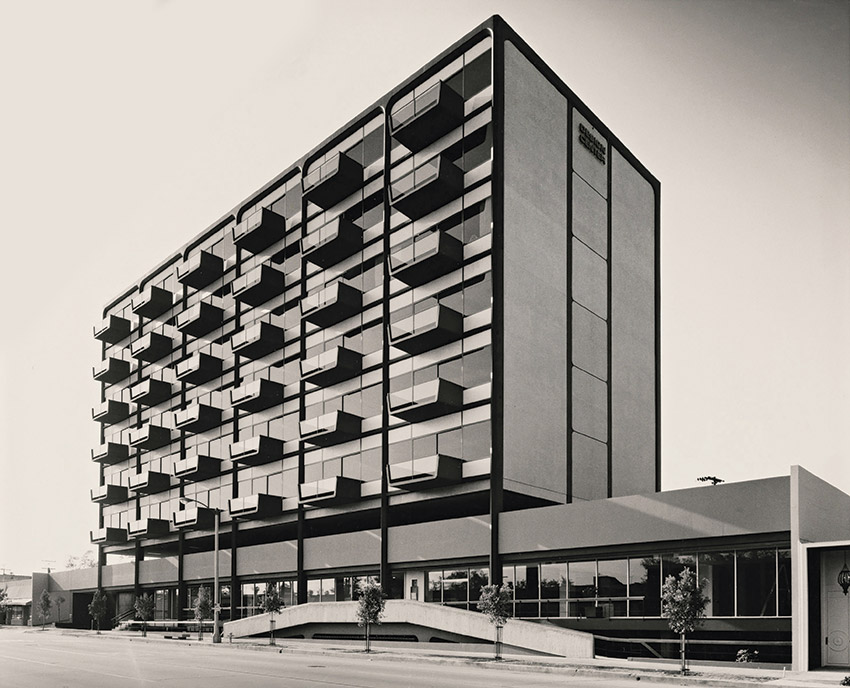Converting Offices to Housing
Learning Objectives:
- Discuss the implications of rising office vacancy rates for the health and vitality of urban centers.
- Outline the characteristics that would make a particular office building a good candidate for conversion to housing.
- Describe the structural retrofits that are sometimes necessary when converting an office building to housing.
- Identify strategies for providing access to daylight and fresh air when adapting a large-floor-plate office building to housing.
Credits:
This course is approved as a Structured Course
This course can be self-reported to the AANB, as per their CE Guidelines
Approved for structured learning
Approved for Core Learning
This course can be self-reported to the NLAA
Course may qualify for Learning Hours with NWTAA
Course eligible for OAA Learning Hours
This course is approved as a core course
This course can be self-reported for Learning Units to the Architectural Institute of British Columbia



Julius Shulman, J. Paul Getty trust, Getty Research Institute, Los Angeles, 2004.r.10 (first); © Binyan Studios; VisualHouse (second)
The former Los Angeles International Design Center (first), a 1960s building, is being expanded by Olson Kundig to create a 40-unit condominium (second and third).
Among the many aspects of daily life that the pandemic has transformed, perhaps irreversibly, is the expectation that corporate office work takes place in a corporate office. More than a year of widespread working from home has shown just how adaptable workers and work itself can be. It turns out people can get a great deal done from a corner of their living room, their kitchen table, or—oh! luxury—an actual home office with an actual door, all while being more present for their family and personal projects, not to mention the laundry.
Recent analysis by McKinsey Global Institute suggests that more than 20 percent of the workforce could work remotely three to five days a week just as effectively as from an office—that’s three to four times prepandemic levels. Major companies, including Amazon, Capital One, Facebook, and Ford, have announced permanent remote-work options for eligible staff. Office-vacancy rates have hit new highs—around 19 percent in Manhattan, 22 percent in Chicago, and 24 percent in Los Angeles, with office space available for sublease nationwide up 40 percent at the end of 2020 over the year before. Most affected are older, less desirable buildings as tenants migrate to higher-quality premises. With some experts predicting that vacancy rates will continue rising through 2022, the implications for commercial real estate are profound. So are the possible knock-on effects for municipal tax revenues, transportation, retail, and the vitality of urban centers. It’s no surprise that pundits are pondering whether converting surplus office space to housing can help.
When the pandemic started shutting down projects in Gensler’s corporate workplace practice, the firm asked building-owner clients if there was something that would be helpful in the interim. “We honestly thought they were going to ask us to design some stickers on the floor to keep people apart,” says Steven Paynter, a principal and regional practice area leader for office buildings at Gensler. “Instead, they asked us to help them regain some confidence in their real-estate portfolios.” Clients in the Canadian oil industry center of Calgary, Alberta, were especially concerned. With pandemic-related vacancies compounding effects of the 2015 energy-sector crash and this year’s cancellation of the Keystone Pipeline, Calgary’s downtown office-vacancy rate is hovering around 32 percent. That translates to an astronomical 12 million square feet of empty real estate. “They realized they weren’t going to see it bounce back,” Paynter says. “They really needed to do something.”
Starting with a single client’s portfolio, and then rapidly expanding at the request of Calgary Economic Development to include more than half of the downtown core, Gensler’s Toronto studio developed a system for scoring office buildings’ suitability for conversion to housing as, Paynter says, a data-based way out of decision paralysis.














